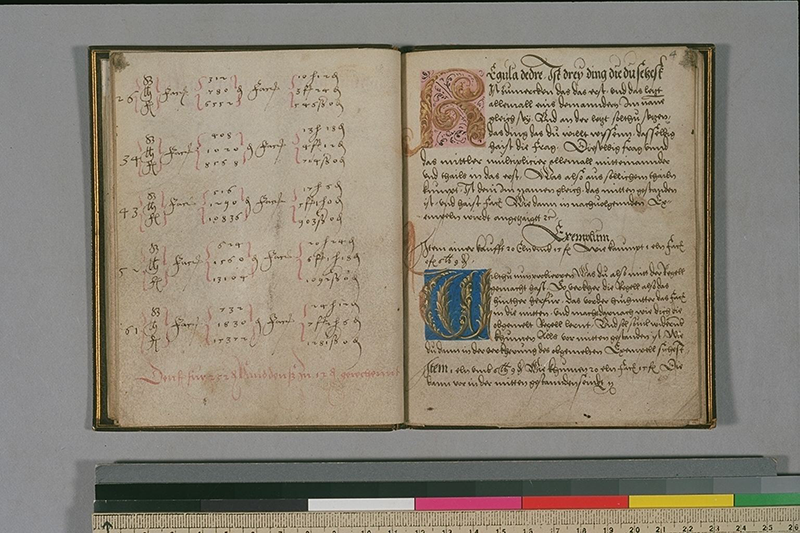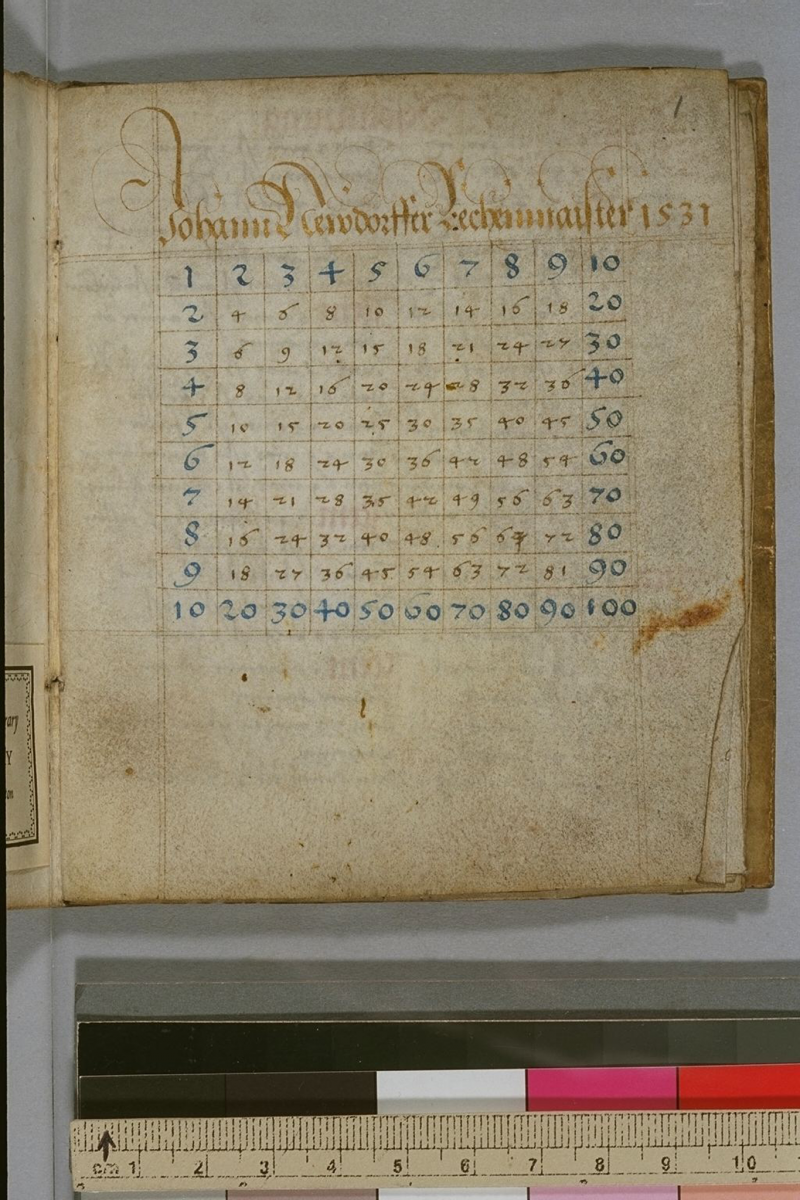- About MAA
- Membership
- MAA Publications
- Periodicals
- Blogs
- MAA Book Series
- MAA Press (an imprint of the AMS)
- MAA Notes
- MAA Reviews
- Mathematical Communication
- Information for Libraries
- Author Resources
- Advertise with MAA
- Meetings
- Competitions
- Programs
- Communities
- MAA Sections
- SIGMAA
- MAA Connect
- Students
- MAA Awards
- Awards Booklets
- Writing Awards
- Teaching Awards
- Service Awards
- Research Awards
- Lecture Awards
- Putnam Competition Individual and Team Winners
- D. E. Shaw Group AMC 8 Awards & Certificates
- Maryam Mirzakhani AMC 10 A Awards & Certificates
- Two Sigma AMC 10 B Awards & Certificates
- Jane Street AMC 12 A Awards & Certificates
- Akamai AMC 12 B Awards & Certificates
- High School Teachers
- News
You are here
Mathematical Treasures - Johann Neudörffer‘s Rechenbüchlein
Johann Neudörffer (1497–1563) was a Nuremberg reckoning and writing master who was well respected in his time. Indeed, his skills in calligraphy inspired a number of type families. The Rechenbüchlein (Plimpton MS 209) attributed to him dates from about 1530. Here is the title page for this arithmetic book, with the name of the owner—Hans Dimpfel (1510–1578) of Bavaria—at the top and the name of the author at the bottom:

In the two-page selection shown below, the left page appears to contain calculations concerning monetary conversion; the right page states the “Rule of Three” (“Regula dedre”) and provides an example.

An additional page from this text:

A page from another copy of Neudörffer’s Rechenbuchlein (Plimpton MS 210), dated 1531, provides a table of multiplication facts and identifies the writer as a rechenmeister (as does the first image above).

The images above have been obtained through the kind cooperation of the Rare Book and Manuscript Library of the Columbia University Libraries. These and more images may be accessed via Digital Scriptorium, a digital collection of medieval and early Renaissance manuscripts made available by a consortium of cooperating university libraries headed by the University of California, Berkeley.
A contemporary portrait of Neudörffer teaching mathematics to a young student is available via Wikimedia Commons.

Frank J. Swetz (The Pennsylvania State University), "Mathematical Treasures - Johann Neudörffer‘s Rechenbüchlein," Convergence (June 2018)




